
© 2010-2022 by Fine Arts of the Southwest, Inc. All rights reserved.
Unauthorized reproduction or use is strictly prohibited by law.
A remarkable Hopi polished plainware pottery jar
by Camille Quotskuyva (Hisi) Nampeyo, c. 1990’s
You could say that this remarkable jar is the head-on collision of ancient art and Modern art. The Hopi people have been making pottery in one form or another for well over a thousand years. It is a living tradition which has been passed down through untold generations.
Camille Quotskuyva (Hisi) Nampeyo (b.1964) is heir to a remarkable Hopi family pottery legacy; her Mother was the renowned Hopi potter, Dextra Quotskuyva Nampeyo (1928-2018) and her great-great Grandmother was the exceptional Hopi pottery Matriarch, Nampeyo of Hano (1858-1942). Her aunt, her grandmother and her great-Grandmother were also distinguished Nampeyo Family potters, respectively Priscilla Namingha Nampeyo (1924-2008), Rachel Namingha Nampeyo (1903-1985) and Annie Healing Nampeyo (1884-1968).

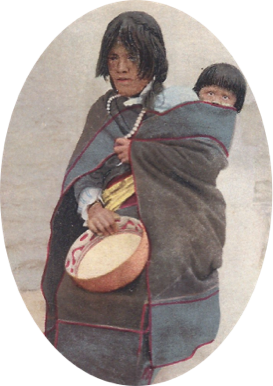
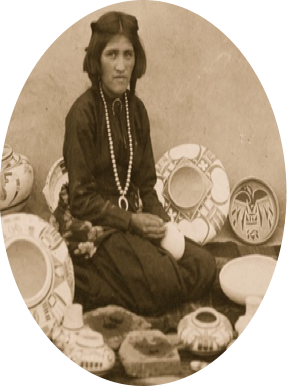
At left and right, Constantin Brancusi, "Bird in Space", 1928.
Photo source and © Metropolitan Museum of Art, New York City
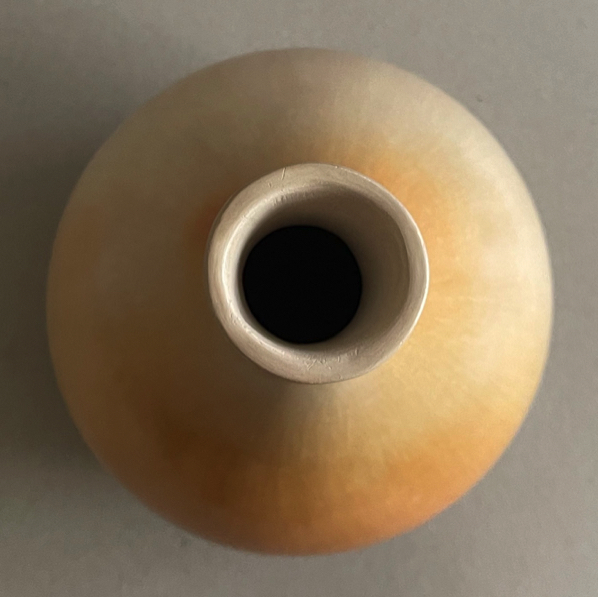
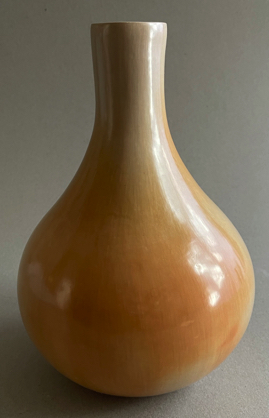
This remarkable Hisi Nampeyo jar stands squarely in the middle of Hopi pottery tradition in some ways yet it is starkly different in others. It is more in the realm of a Hopi ceramic art expression than it is a piece of traditional Hopi pottery. The materials and the methods used are completely traditional Hopi; Antelope Mesa untempered clay, a coiling method of forming the vessel, exceptional all-over traditional stone polishing and a high-temperature outdoor firing with Lignite coal to achieve the beautiful whitish, yellow-orange firing blushes.
The shape of the vessel, however is decidedly non-traditional Hopi as is the basic lack of functionality. It is not useful in a utilitarian sense; it is not an "olla" or water jar or a storage jar; it is not a canteen or a dough bowl or food bowl. Perhaps it could be used as a single flower vase, a decidely non-Hopi form, but it stands much more in the realm of a pure artistic sculptural object expression in much the same way as the great European Modernist sculptor, Constantin Brancusi’s (1876-1956) incredibly formed abstract sculptures stand. We would like to again point out the absolutely incredible stone polishing on this vessel as it is so important to the precious and jewel-like glowing surface of the piece.
The vessel measures 9” in height and is around 6” in diameter at its widest shoulder point. It is in completely excellent original condition. There are two or three very minor small dimples in the clay surface which original to the piece, but nothing that in any way constitutes damage. The jar is properly signed “Hisi Nampeyo” on the bottom with Hisi’s corn clan corn ear hallmark, similar to that used by her Mother Dextra. The jar has an interesting provenance, it comes to us from the former collection of the renowned Native American and Inuit arts collectors, Daniel and Martha Albrecht. It is unknown where the Albrechts originally purchased the jar, possibly directly from Hisi or possibly from The Heard Museum gift shop gallery, an institution they were very closely associated with.
This vessel is an extraordinary synthesis of ancient tradition, individual inspiration and artistic expression, sculpture, Modernism and perhaps a bit of a Nampeyo family “wild hair” all rolled up in one piece; extraordinary and magnificent. Hisi is a living heir to a thousand year old ancient Native American pottery tradition, but The Museum of Modern Art in New York City would be very proud to present this piece in its modern sculpture gallery where it would be perfectly at home.
SOLD
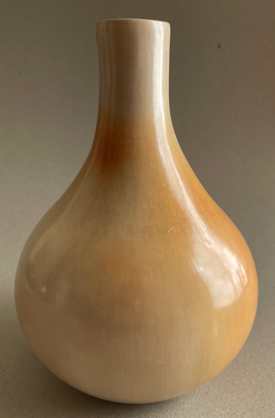
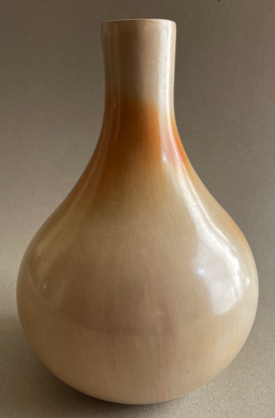
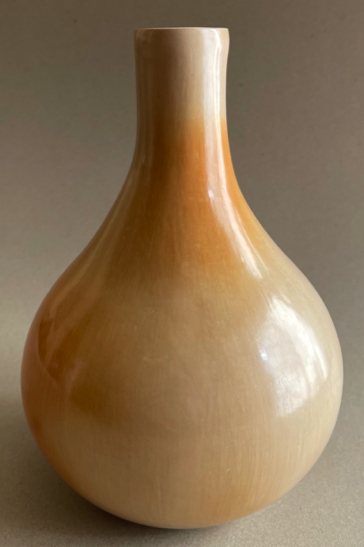
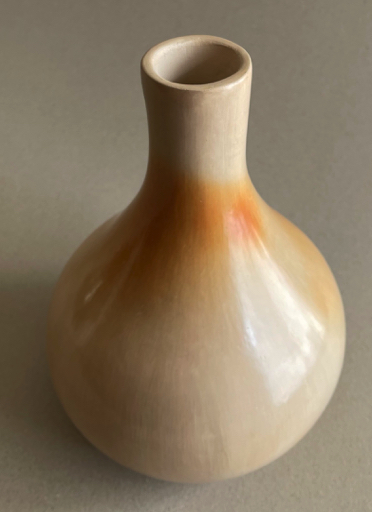
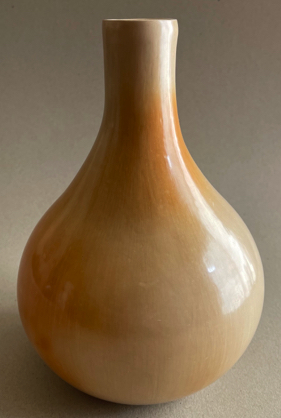
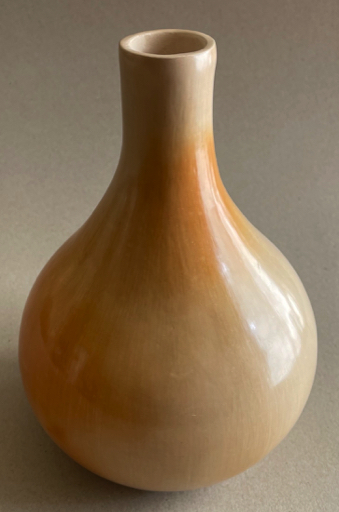
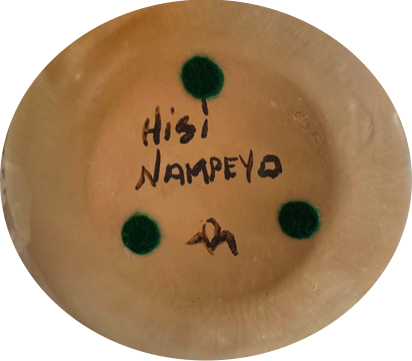
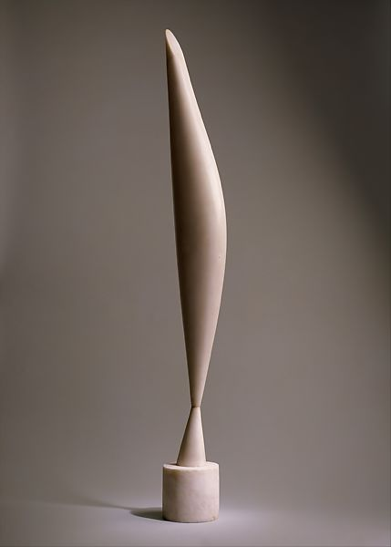
Both Nampeyo and much later Dextra exhibited a great deal of original Modernism in many of their pottery pieces, Nampeyo with her incredible abstract painted designs based in part upon ancient Hopi Sikyatki pottery traditions (1375-1625 A.D.) but distinctly her own individual abstract compositions rivaling and often exceeding the work of European Modernists such as Wassily Kandinsky, Paul Klee, Picasso and Joan Miro.
Dextra’s Modernism came through in a variety of different ways; the use of unusual daringly original pottery shapes and forms and often equally daring painted decorations. Dextra also occasionally made extremely Modernist homage or tribute pots to other modern artists whose work she was inspired by, such as Hopi jeweler Charles Loloma and non-Native ceramic artist, Rick Dillingham.
So perhaps Hisi comes by her Modernism through heredity and her family genes and experience. It is an interesting and not unrelated fact to note that her older brother is the renowned Hopi Modernist sculptor and painter, Dan Namingha (B.1950). As a member of a prominent artistic Hopi family, Hisi was also well aware growing up of the work of other important Hopi Modernist artists such as painter, pottery-maker and jeweler, Charles Loloma (1921-1991) and pottery-maker Polingaaysi Qoyawayma or Elizabeth Q. White (1892-1990) who learned to make pottery from Loloma.
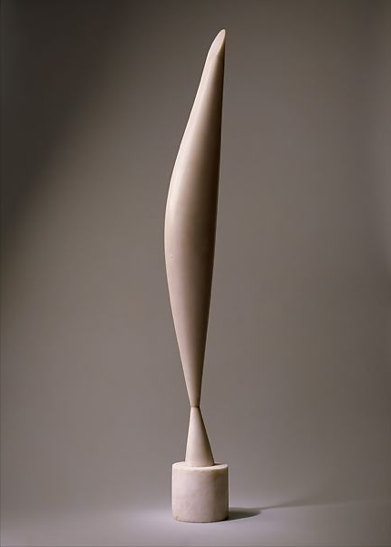
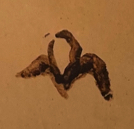
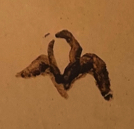
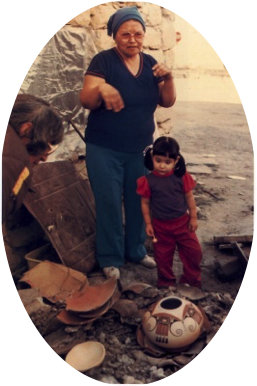
Five generations of Nampeyo Family potters.
From left to right, Nampeyo of Hano with her Granddaughter Rachel, Hisi's Grandmother, c. 1900; Annie Healing Nampeyo, Nampeyo's eldest Daughter and Rachel's Mother, c. 1901; Dextra Quotskuyva Nampeyo with her young Daughter, Hisi Nampeyo and Charles Loloma, c. 1970 and Hisi Nampeyo, c. 1994
Left and near left photo source and © Fred Harvey Company. Third from left photo source and © marthastruever.com.
Right photo source and © "Fourteen Families of Pueblo Pottery" by Rick Dillingham, University of New Mexico Press, 1994, pp. 58